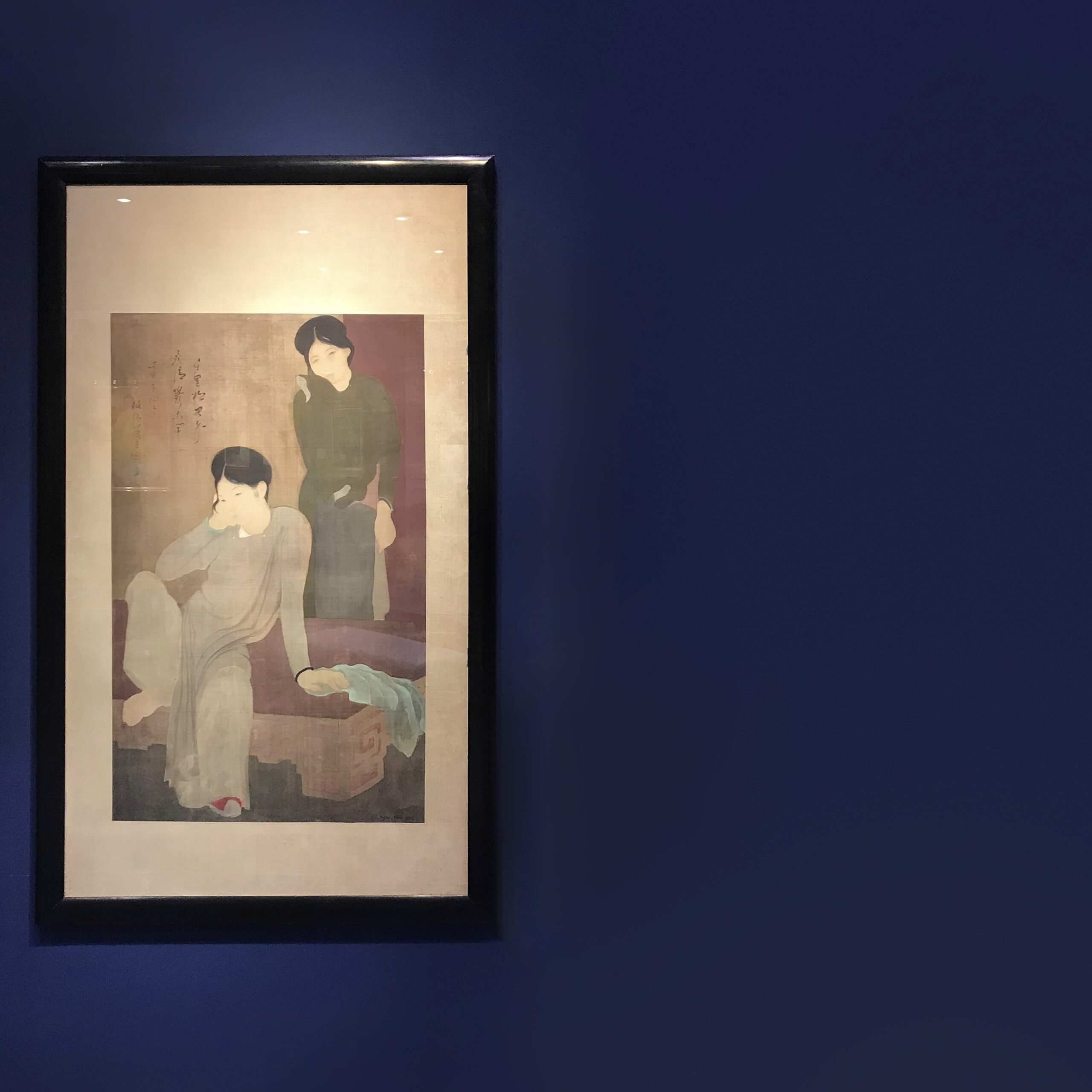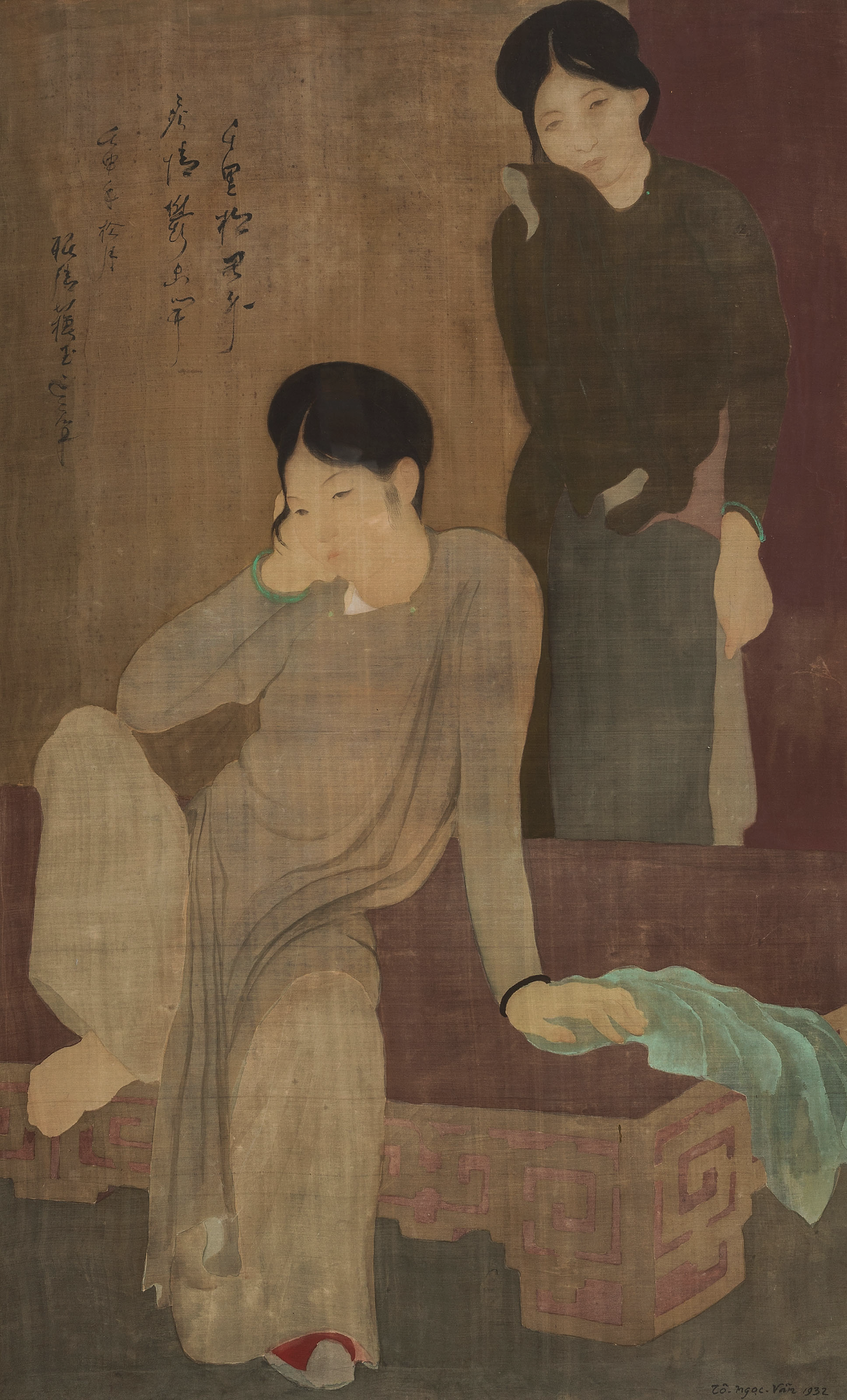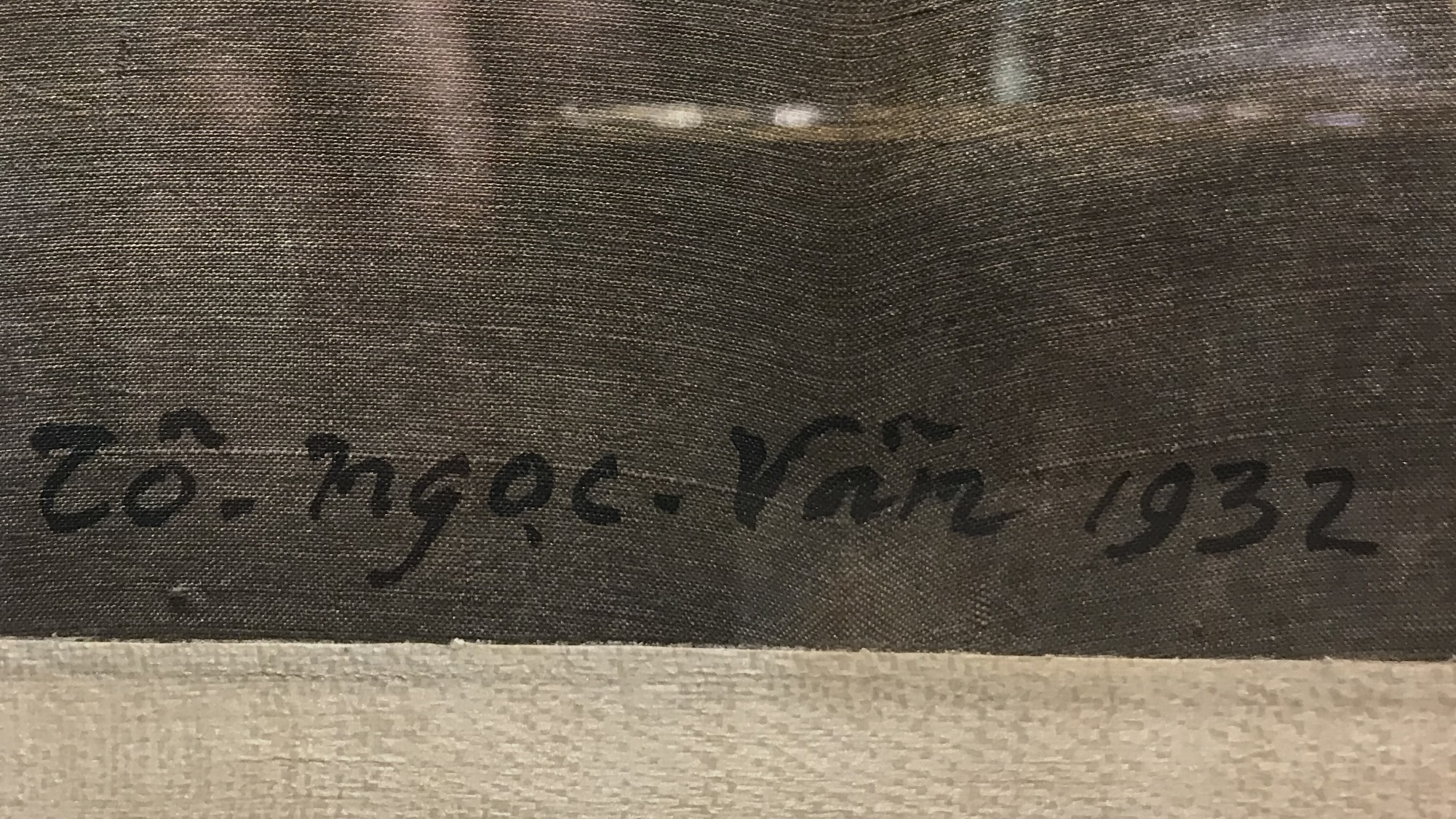
To Ngoc Van's Les Désabusées (Disillusionment) fetched HKD 9,125,000 its peak and became the world record for the artist at Christie's Hong Kong on 26 May 2019.
To Ngoc Van (Vietnam, 1906-1954)
Les Désabusées (Disillusionment)
signed and dated 'To ngoc Van 1932'; inscribed in Chinese (upper left)
ink and gouache on silk
92.5 x 57 cm. (36 3/8 x 22 1/2 in.)
Painted in 1932
Provenance
Agence Economique de l'Indochine (AGINDO), Paris
Private Collection, Paris, 1993
Anon. Sale, Sotheby's Singapore, 6 April 2003, lot 110
Acquired at the above sale by the present owner
Collection of Mr Tuan H Pham, California, USA
Christie's Hong Kong, 24 May 2019
Exhibited
Singapore, Singapore Art Museum, Visions and Enchantment, South East Asian Paintings, June - August 2000.
Morlanwelz, Belgium, Musee Royal de Mariemont, La fleur du pecher et l'oiseau d'azur, April – August 2002.


To Ngoc Van's signature
"The words of a poem endure the bites without complaints,
And my heart's blood gushes out and spreads everywhere.
This poetry is in my heart and never stops singing,
Its plaintive echoes resonate all around. "
Han Mac Tu (1912-1940)
"Voyaging far away from home my affection is like a flower in despair longing for the bloom": the painter delivers us a handwritten clue for a better understanding of his work.
The hard-felt disillusion through these two elegant women in their posture expressing prostration and, or disillusionment, is accentuated by the rich furnishing and the smart clothing of these two women. What is it for the artist: a recognition or an illusion of prospection? In other words, does he express the end of one world, or does he offer the possibility of a new one? In 1932, To Ngoc Van, Inguimberty's favourite student, is evoking more than he is assertive.
His style would later evolve into a politically militant style, but for the moment, Ngoc was not yet part of the revolutionary movement that he would join in August 1945. When he worked on this painting, he was also not yet the first director of the Ecole des Beaux-arts de la Résistance which would open in Dai Tu in the Thai Nguyen province, where he would join his colleagues Tran Van Can, Nguyen Khang and Nguyen Tu Nghiem, among others.
Yet in this work, we can already find the principal themes of 20th Century Vietnamese propaganda art. If we are far from the slogans 'fight and build' and 'learn to live', this work reflects more of a change of milieu rather than of theme. The status of Vietnamese women, the legitimacy of an elite class, the influence of the West, and the eventual submission to Chinese influence; all already exist in this painting.
The Vietnamese women are beautiful, elegant and refined and are presented in a similar setting. To Ngoc Van succeeds in creating an outstanding work of art, which is also a political manifesto, with subtleness and irreproachable technique. He illustrates a theme (including the constant evocation of the Trung sisters, who opposed the Chinese invasion of Vietnam in 43 A.D.) that challenges the Vietnamese identity. All is already inherent in this To Ngoc Van's work dated 1932: Confucianism, nationalism, cosmopolitanism, the span of history. The entire history of Vietnamese painting is contained in these varied, sometimes contradictory, but always talented responses to these significant and universal questions.
Jean-François Hubert
Senior Expert, Vietnamese Art










